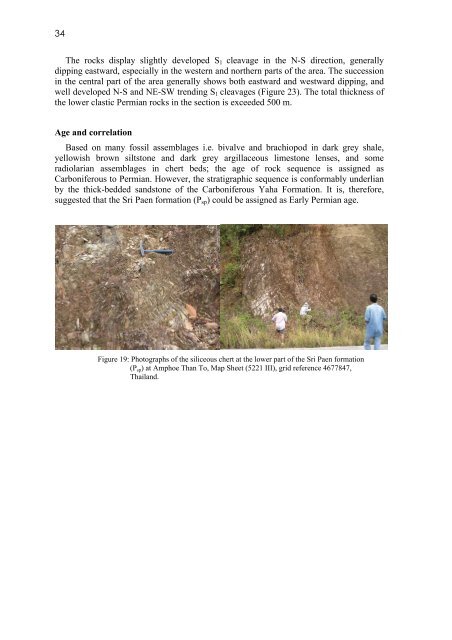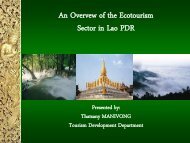GEOLOGY OF THE PENGKALAN HULU-BETONG TRANSECT ...
GEOLOGY OF THE PENGKALAN HULU-BETONG TRANSECT ...
GEOLOGY OF THE PENGKALAN HULU-BETONG TRANSECT ...
Create successful ePaper yourself
Turn your PDF publications into a flip-book with our unique Google optimized e-Paper software.
34<br />
The rocks display slightly developed S1 cleavage in the N-S direction, generally<br />
dipping eastward, especially in the western and northern parts of the area. The succession<br />
in the central part of the area generally shows both eastward and westward dipping, and<br />
well developed N-S and NE-SW trending S1 cleavages (Figure 23). The total thickness of<br />
the lower clastic Permian rocks in the section is exceeded 500 m.<br />
Age and correlation<br />
Based on many fossil assemblages i.e. bivalve and brachiopod in dark grey shale,<br />
yellowish brown siltstone and dark grey argillaceous limestone lenses, and some<br />
radiolarian assemblages in chert beds; the age of rock sequence is assigned as<br />
Carboniferous to Permian. However, the stratigraphic sequence is conformably underlian<br />
by the thick-bedded sandstone of the Carboniferous Yaha Formation. It is, therefore,<br />
suggested that the Sri Paen formation (Psp) could be assigned as Early Permian age.<br />
Figure 19: Photographs of the siliceous chert at the lower part of the Sri Paen formation<br />
(Psp) at Amphoe Than To, Map Sheet (5221 III), grid reference 4677847,<br />
Thailand.



